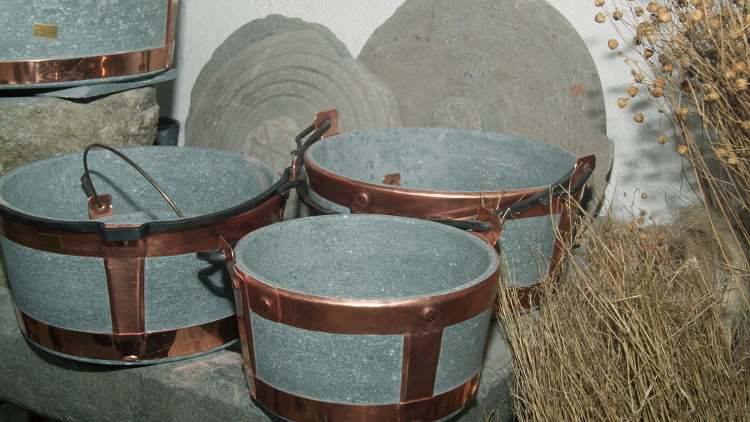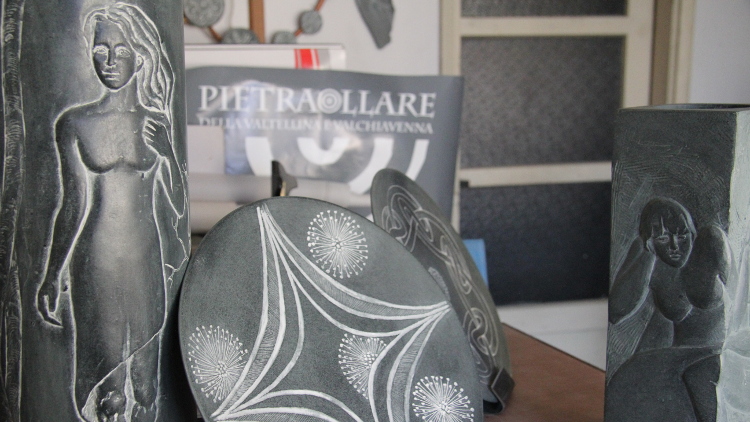Pietra ollare has been worked for centuries. This variety of
serpentinite has a high percentage of talc or chlorite, which makes it
relatively soft and easy to work. It also has high thermal resistance and is
used to make lavecc pots and oil jars called olle.
The biggest deposit of this stone is found in the Alps and is centred in
Valmalenco, but it is also present in Chiavenna and surroundings, in Valcondria
and Prata, and from Piuro to Castasegna and beyond
Lavecc and piode
Lavecc pots are carved from pietra ollare due to its ability to retain heat for lengthy periods, making it idea to cook stews, braised meat and taròz (mashed potatoes with bacon, mangetout peas, cheese, butter and sage). Piode, which are characteristic of Valmalenco, are serpentinite slabs that are ideal for cooking meat on a wood fire, but they are mostly used as roofing tiles because they are extremely hard-wearing with exceptional flexural and compressive strength.
Pietra ollare art
In addition to the more traditional objects, local artisans today carve
an increasingly wide range of products. In recent years, pietra ollare has
become a prized sculpting material, with interesting secular and religious
artworks being produced in Valmalenco and Valchiavenna. A perfect example of
this is the baptismal font in Chiavenna, and keep an eye out for the many
portals, fountains, arcades and decorative objects.
QUARRIES IN VALMALENCO AND VALCHIAVENNA
Most of the
quarries in Valmalenco, some of which are open to visitors, are located in
Chiesa in Valmalenco, at Alpe Pirlo and in Val Giumellino. In the past, there
were also quarries in Valbrutta (Lanzada), Torre di Santa Maria and to the
southwest of the Motta di Caspoggio. In Valbrutta, the “Percorso dei torni
della pietra ollare” (pietra ollare lathes) trail winds through the area where
pietra ollare was turned into stone pots, not far from the quarry.
In Valchiavenna the stone was mined in underground trone tunnels carved
into the rock, some of which have recently been explored in the Piuro area. The
large Caurga quarry and the Bottonera district are renowned traditional
production areas.





